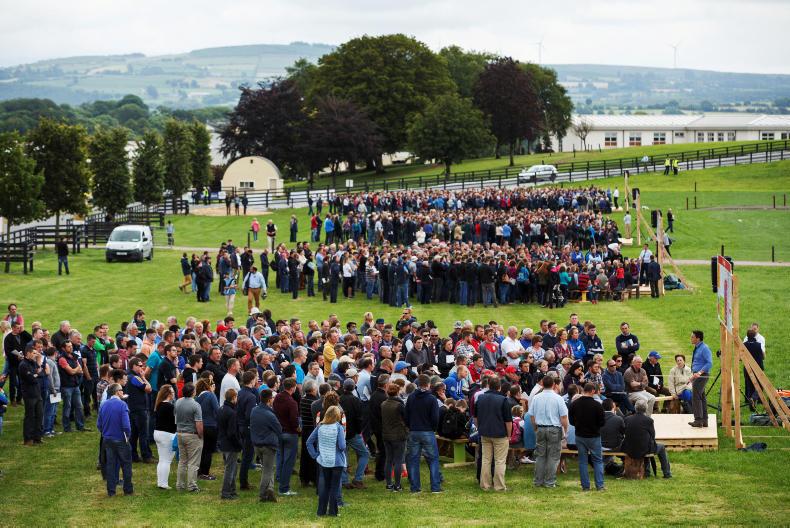The average dairy farmer is making €250/ha profit but hitting all the right technical targets could see this increase tenfold to €2,500/ha. These were the numbers that shocked farmers on the first stand at the Moorepark open day on Tuesday. The figures are quite stark and represent the huge difference in how the average dairy farmer compares to those implementing the best on-farm technical performance.
You might rightly ask what the technical messages are that could make such a difference. Brendan Horan said: “Moving herd EBI from the national average of €70 to over €200 ebi is part one. Moving a six-week in-calf rate from 57% to 90% is equally as important and average lactation length needs to move from 3.1 lactations on average to over five lactations per cow.”
Brendan also explained what needs to happen on stocking rate, milk solids and grass – move from the average 2.0 livestock units per hectare closer to 2.9 cows/hectare, produce 1,350kg of milk solids per hectare instead of 730, and achieve grass utilisation of 12.5t instead of the average 7.9t of dry matter per hectare.
While Brendan admitted that these are stretch targets for a number of farmers, he said the positive message is that more progress can be made and achieving a net profit of €2,500 per hectare is possible with the best technical performance.
In terms of investments, Brendan suggested prioritising the high-return investments and, in general, feed (purchasing meal) is not a high return area as usually the actual feed is only part of the cost because equipment generally needs to be purchased for feed, etc.
On the second stand, Padraig French and Paidi Kelly outlined the challenge around getting more labour on dairy farms. They suggested that one of the key issues is the negative perception portrayed by dairy farmers about the industry. For those herds expanding, they suggested the hours worked per cow needs to move from 40 to 20 hours per cow.
Grass message
On the third stand, Mike Egan and Mick O’Donovan outlined the grass message. Mick said: “Set up your farm with the proper infrastructure for grazing, not for the silage contractor. Your cows will be grazing hundreds of days per year while your contractor might only be in the fields for two days per year. You also need to graze what grass you are growing. No point in growing more grass and making more silage.”
Mike Egan said: “In spring, you need to aim for an opening grass cover over 900kg DM/ha and that is important because every 100kg of extra grass in the spring is worth an extra 9kg of milk solids per hectare.”
When Mike was queried on the value of clover, he said: “We have shown in trials that a grass clover mix can increase dry matter yield by 1.1t/ha per year but you need to get soil fertility right, and a lot of other elements before it can deliver.”
On the fourth stand, Moorepark researchers Donagh Berry and Stephen Butler discussed how to breed the perfect cow. Donagh spent a good bit of time suggesting that the EBI is going in the right direction and delivering a cow with better fertility, higher milk solids and better for the environment. He also said: “Believe it or not, increasing EBI is improving carbon footprint and every 10 units of EBI will lead to a 2% reduction in carbon emissions per kilo of milk solids.”
He stressed that breeding indexes have been proven to work in only two countries – Ireland and Australia. As if to reassure farmers that breeding for fertility will not reduce milk solids he showed figures that milk solids is up 83% of what it was over 20 years ago. With national herd fertility figures almost back to where they were in 1990, it seems the way forward is more EBI, and if you are brave enough, crossbreeding with high EBI Jersey sires can deliver an additional profit of €100 to €150 per cow per year.
Village life at Moorepark 2017
Editorial: We need to go back to basics if we are to drive dairy profitability
